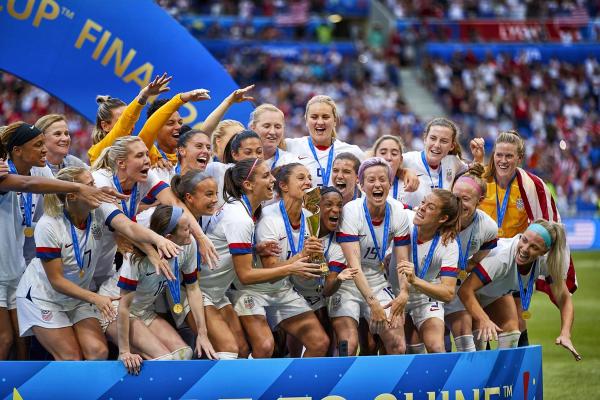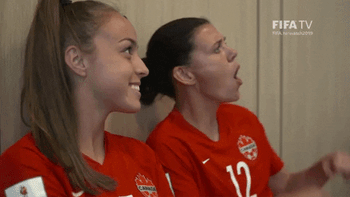FIFA’s attempt to maximize the 2023 WWC’s financial potential

🏆 Bigger and better and best
The USWNT weren’t the only winners at the 2019 WWC in France. FIFA and its partners scored several business Ws during the tournament, which convinced world soccer’s governing body to fast-track upgrades for 2023. The first change? Increasing the WWC from 24 to 32 teams, which FIFA greenlit just weeks after the USWNT’s victory in 2019.
And FIFA didn’t stop there. With preparations underway for the 2023 WWC in Australia and New Zealand, FIFA launched a new commercial partnership structure in December 2021 designed to capitalize on the global growth of women’s soccer. This included unbundling the women’s sponsorship inventory and media rights from the men’s counterpart for the first time.
- The new strategy kicked off with a bang — FIFA landed Visa as its first women’s soccer partner before the ball dropped on 2021 and went on to add New Zealand–based software platform Xero to the roster four months later.
However, FIFA experienced some growing pains with its commercial strategy. Selling WWC broadcast rights proved difficult in five countries where the game is undoubtedly growing — the U.K., Germany, Spain, France, and Italy. The organization was locked in a monthslong battle to secure a deal, which was finally resolved last week.
- FIFA accused broadcasters of devaluing the WWC by submitting bids as low as $1M, which didn’t match the organization’s calculations that valued global WWC rights at $300M.
- Meanwhile, broadcasters argued that the unfavorable time zone should drive down the price of this year’s rights. They were also unsure how to value the WWC because it was unbundled for the first time ever.
This wasn’t the only stumbling block for FIFA on the road to the 2023 WWC. The governing body tried to sign the tourism arm of Saudi Arabia (Visit Saudi) as a tournament sponsor, a move that earned a straight red card, with many correctly describing it as sportswashing. FIFA thankfully reversed course before signing on the dotted line.
🔮 If you could gaze into the future
This year’s WWC will serve as a first test for FIFA’s new commercial partnership structure, but not necessarily as a conclusion on the strategy’s success. At the very least, the unbundled deals will allow FIFA and stakeholders to determine the WWC’s true financial value for the first time and how it correlates with growing interest in women’s soccer globally.
- FIFA’s moves likely increased the WWC’s value for 2023, but the competition is poised for greater growth in future editions. FIFA rolled out the new strategy less than two years before kickoff, and the unfavorable time difference likely contributed to smaller broadcast deals in lucrative European markets.
- The time zone might also dent viewership numbers in Europe and the U.S., where matches will mostly be live in the middle of the night or early morning. It hasn’t impacted everything, though — U.S. English-language rightsholder Fox has sold 90% of its WWC ad inventory. Score.
When it comes to media rights, FIFA has a massive opportunity to cash in for 2027. The broadcast deals it signed in Western Europe only cover the 2023 WWC, and FIFA’s deal with Fox and its American Spanish-language agreement with NBCUniversal’s Telemundo will expire after the 2026 men’s World Cup.
- Both U.S. broadcasters struck deals with FIFA that included all women’s and men’s World Cups from 2015 to 2026 and initially forked over around $1B collectively to air the competitions. Cha-ching.
Women’s soccer’s continuing rise should attract even more sponsors for 2027, but considering FIFA’s potential alliance with Visit Saudi this year, it begs the question: Will Saudi Arabia or other problematic backers try again, and will FIFA be able to resist the money next time?
Between the Visit Saudi discussions and last year’s men’s World Cup in Qatar, it’s not like FIFA has a strong track record on saying no to deep sportswashing pockets. But Saudi Arabia’s considerable ascension in recent weeks could change the sports landscape as we know it and poses a new set of questions for everyone in the sports business.
- The PGA Tour’s proposed merger with Saudi-backed LIV Golf means the PGA’s existing business partners must consider whether or not they also want to do business with Saudi Arabia if the deal goes through.
- If partners give in, does it set a precedent for other organizations like FIFA to embrace backing from sovereign wealth funds? Or will player backlash be enough to turn down the check? Only time will tell.
🔑 Key takeaways
💰 Unbundling has its perks. FIFA assessed that the market is big enough to lure sponsors interested in specifically supporting women’s soccer and signed deals accordingly. And FIFA isn’t alone — UEFA recently unbundled its women’s and men’s commercial operations, raking in $16M in revenue from the Women’s Champions League in 2021–22.
⚽ What will FIFA gain from increasing the WWC field to 32 teams? Matchday revenue and TV audiences should rise thanks to more games on the schedule, while New Zealand’s economy expects a boost of over $124M from this year’s tourney.
🌍 Will the WWC bump lift women’s club soccer around the world? The USWNT’s 2019 win drove audiences and sponsors to the NWSL, and the league hopes to capitalize on that momentum again. Other leagues around the world — like England’s burgeoning Women’s Super League — could also reap long-lasting benefits from the WWC. Halo effec
Enjoying this article? Want more?

Sign up for The GIST and receive the latest women's sports business news straight to your inbox three times a week


